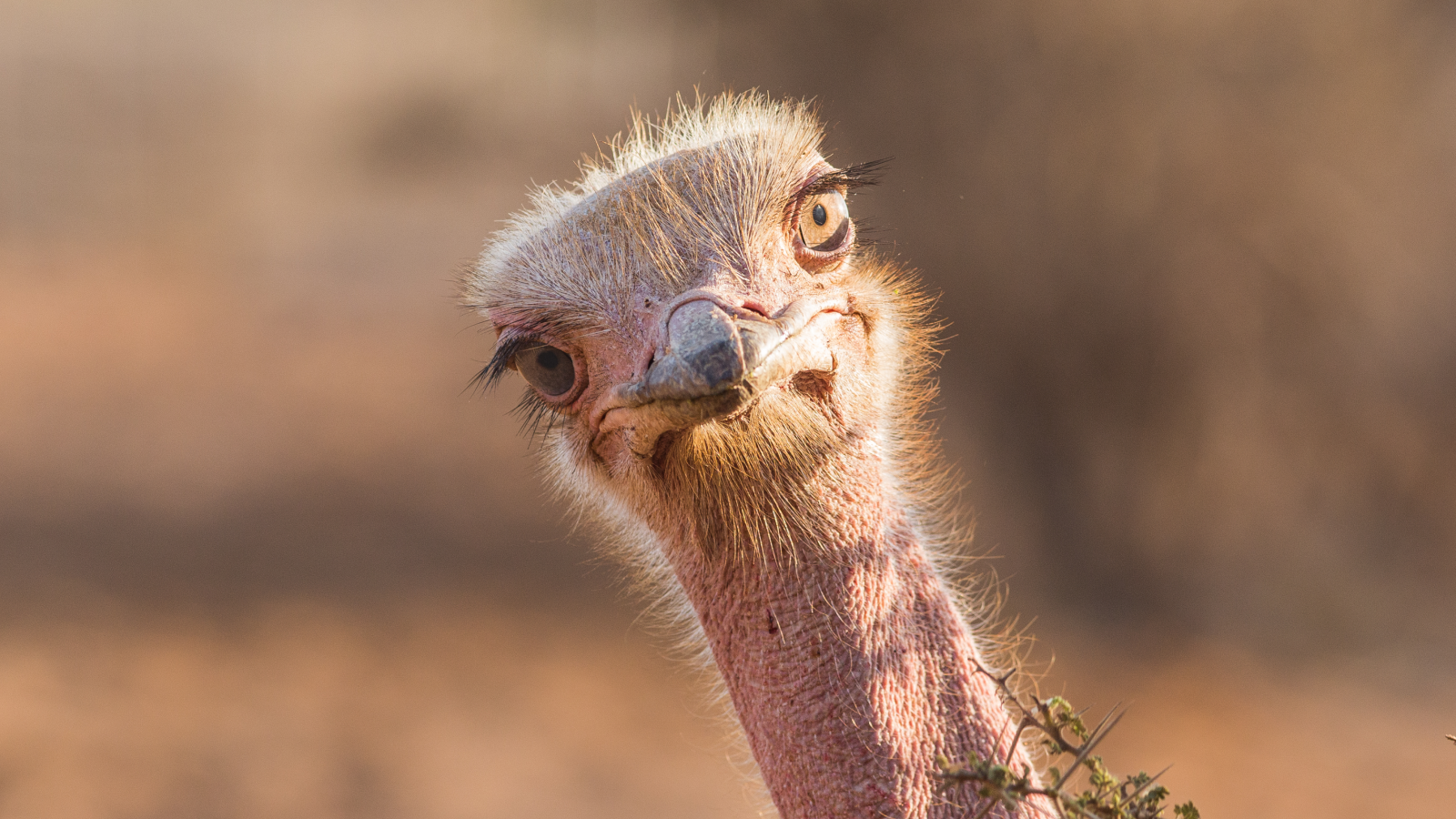By Chris Simms
Copyright livescience

Skip to main content
Close main menu
Live Science
Sign up to our newsletter
View Profile
Search Live Science
Planet Earth
Archaeology
Physics & Math
Human Behavior
Science news
Life’s Little Mysteries
Science quizzes
Newsletters
Story archive
Skyscraper-sized asteroid flyby
Diagnostic dilemma
Elusive ‘grumpy’ cat photographed
Anthropologist Ella Al-Shamahi on human origins
How misinformation spreads
Don’t miss these
Extinct species
Why giant moa — a bird that once towered over humans — are even harder to de-extinct than dire wolves
Extinct species
Bite marks reveal giant terror birds were potentially prey for another apex predator — humongous caiman
14 of the biggest birds on Earth
Scientists find baby pterosaurs died in violent Jurassic storm 150 million years ago
Kākāpō: The chonky parrot that can live almost 100 years
‘Ash-winged dawn goddess’ is oldest pterosaur ever discovered in North America — and it was small enough to sit ‘on your shoulder’
Extinct species
‘We’re bringing back avian dinosaurs’: De-extinction company claims it will resurrect the giant moa in next 10 years
Land Mammals
How the mystery origins of hairy little Yakutian horses were uncovered in Siberia’s ‘gateway to the underworld’
Human Evolution
‘It makes no sense to say there was only one origin of Homo sapiens’: How the evolutionary record of Asia is complicating what we know about our species
Land Mammals
Earth’s early primates evolved in the cold — not the tropics
Mysterious ‘runner’ dinosaur a sign there are more Jurassic secrets to unlock beneath western US
T. rex relatives ‘moonwalked’ to attract mates, newfound dinosaur ‘mating arena’ suggests
Oldest-known dome-headed dinosaur discovered sticking out of a cliff in Mongolia’s Gobi Desert
Night lizards survived dinosaur-killing asteroid strike despite living right next to impact site
Extinct species
Ancient DNA from Mexico’s mammoths reveals unexpected — and unexplained — genetic mysteries
‘Rare’ ancestor reveals how huge flightless birds made it to faraway lands
Chris Simms
17 September 2025
The mystery of how related flightless birds ended up so far apart on different continents may have been solved.
When you purchase through links on our site, we may earn an affiliate commission. Here’s how it works.
The ancestors of giant birds like common rheas were likely able to fly long distances, fossils suggest.
(Image credit: Mickael Nigay / 500px via Getty Images)
Ostriches, emus, rheas and other large, flightless birds are found on six landmasses separated by oceans, but how they reached such far-apart places without the ability to fly has remained an enduring mystery.
One idea was that the ancestors of this group of birds, known as paleognaths, just walked to those locations when most of the planet was harnessed together as the supercontinent Pangaea (320 million to 195 million years ago) and that, when this giant landmass split up, the birds were already in those locations.
The trouble is, the timing for that hypothesis is wrong. Pangaea had broken up by about 195 million years ago, creating the continents we know today. However, genetic studies have indicated that the last common ancestor of these paleognaths lived about 79.6 million years ago and that they divided into the main lineages we know today between about 70 million and 62 million years ago.
You may like
Why giant moa — a bird that once towered over humans — are even harder to de-extinct than dire wolves
Bite marks reveal giant terror birds were potentially prey for another apex predator — humongous caiman
14 of the biggest birds on Earth
To work out what happened, Klara Widrig, a vertebrate zoologist at the Smithsonian National Museum of Natural History in Washington, D.C., and her colleagues analyzed a specimen of the ancient paleognath Lithornis promiscuous. Although it lived around 59 to 56 million years ago, it is the oldest fossil palaeognath found in such pristine condition.
“We can’t tell for sure if Lithornis was the direct ancestor of our living paleognaths — it is entirely possible that the true ancestor is yet to be discovered — but it represents our best guess as to what the ancestor would have looked like,” Widrig told Live Science.
Previous investigation of preserved feathers of a slightly more distantly related lithornithid called Calciavis grandei indicated that it could have flown, but it wasn’t clear how far. No one had done a quantitative analysis of the shape of lithornithid bones to try to answer that question.
Related: Do ostriches really bury their heads in the sand?
Sign up for the Live Science daily newsletter now
Get the world’s most fascinating discoveries delivered straight to your inbox.
Contact me with news and offers from other Future brandsReceive email from us on behalf of our trusted partners or sponsorsBy submitting your information you agree to the Terms & Conditions and Privacy Policy and are aged 16 or over.
So, in the new study, published Wednesday (Sept. 17) in the journal Biology Letters, Widrig and her colleagues compared the shape of the sternum, or breastbone, of L. promiscuous to those of living birds and used a three-dimensional geometric dataset to work out how well the animal could have flown.
“The sternum is very important for flight because that’s where the big pectoral flight muscles anchor,” Widrig said.
The shape of the sternum indicated it could have handled a range of aerobic, flapping flight styles, which would have enabled lengthy flights.
You may like
Why giant moa — a bird that once towered over humans — are even harder to de-extinct than dire wolves
Bite marks reveal giant terror birds were potentially prey for another apex predator — humongous caiman
14 of the biggest birds on Earth
“We found that the shape of the breastbone was really similar to that of living birds that are capable of flying very long distances across oceans, like great egrets and herons,” Widrig said.
“This is very interesting because the great egret is a cosmopolitan species in that it travels from continent to continent,” said Peter Hosner, curator of birds at the Natural History Museum of Denmark, who wasn’t involved in the work.
“Such species are actually quite rare in birds,” he told Live Science. “We get biased in the Northern Hemisphere, where many birds are migratory and cover long distances. But globally, most birds are residents found in one continent, island or small area, and don’t really move that much.”
The finding suggests that ancient paleognaths may have flown to the distant landmasses and established populations that later independently evolved into the large and generally flightless birds we know today.
“It seems to be a spectacular case of convergent evolution,” Hosner said.
Today, there are about 60 species of living paleognaths. They include about 45 species of tinamou (which can fly in short bursts much like pheasants do), up to five species of kiwi, one species of emu, three species of cassowary, two species of ostrich, and either one or two species of rhea, Widrig said.
“In order for a bird to become flightless, two conditions have to be met,” she said. “It has to be able to get all of its food on the ground, so it can’t be relying on food that’s up in trees, for example. And there can’t be any predators that it would need flight to escape from.”
In more recent times, that would have happened only in predatorless island environments, Widrig said, such as with the dodo (Raphus cucullatus). But after the Cretaceous-Paleogene extinction event some 66 million years ago wiped out the nonavian dinosaurs, it was very different.
RELATED STORIES
—Why don’t all birds fly?
—’It was clearly a human assault on the species’: The fate of the great auk
—Southern cassowary: The giant prehistoric bird with dinosaur feet
“The world was cleared of predators generally, and mammalian predators had not evolved yet — so any ground-feeding bird had a free pass essentially to become flightless,” Widrig said. “Flight is hard work, and it’s a lot easier to be flightless if you don’t have to get away from anything.
When bigger predators did emerge, she said, the flightless birds would have had time to adapt either by becoming big and intimidating, like the cassowary, or by becoming swift runners, like the ostrich.
But all these similar changes evolved independently. “It’s not as if they got on a conference call with each other and said, ‘Okay, you go to Africa and you’re going to evolve into an ostrich. I’m gonna go to South America. I’m gonna evolve into a rhea,'” Widrig said.
Chris Simms
Live Science Contributor
Chris Simms is a freelance journalist who previously worked at New Scientist for more than 10 years, in roles including chief subeditor and assistant news editor. He was also a senior subeditor at Nature and has a degree in zoology from Queen Mary University of London. In recent years, he has written numerous articles for New Scientist and in 2018 was shortlisted for Best Newcomer at the Association of British Science Writers awards.
You must confirm your public display name before commenting
Please logout and then login again, you will then be prompted to enter your display name.
Why giant moa — a bird that once towered over humans — are even harder to de-extinct than dire wolves
Bite marks reveal giant terror birds were potentially prey for another apex predator — humongous caiman
14 of the biggest birds on Earth
Scientists find baby pterosaurs died in violent Jurassic storm 150 million years ago
Kākāpō: The chonky parrot that can live almost 100 years
‘Ash-winged dawn goddess’ is oldest pterosaur ever discovered in North America — and it was small enough to sit ‘on your shoulder’
Latest in Birds
Best bird song identification apps in 2025 — Identify bird calls and improve your avian knowledge
Kākāpō: The chonky parrot that can live almost 100 years
Japanese quail: The bird with weird sperm foam, a post-sex strut and a spot in space history
How do migrating birds know where they’re going?
Southern cassowary: The giant prehistoric bird with dinosaur feet
Australian ‘trash parrots’ have now developed a local ‘drinking tradition’
Latest in News
Oldest-known dome-headed dinosaur discovered sticking out of a cliff in Mongolia’s Gobi Desert
‘Rare’ ancestor reveals how huge flightless birds made it to faraway lands
‘The sun is slowly waking up’: NASA warns that there may be more extreme space weather for decades to come
Scientists invent new sunscreen made from pollen
Anthropologist claims hand positions on 1,300-year-old Maya altar have a deeper meaning
1,900-year-old ‘treasure’ found in Roman-era family’s scorched house in Romania
LATEST ARTICLES
Scientists invent new sunscreen made from pollen
‘The sun is slowly waking up’: NASA warns that there may be more extreme space weather for decades to come
Anthropologist claims hand positions on 1,300-year-old Maya altar have a deeper meaning
A knife broke off in a man’s chest, and he didn’t notice it for 8 years
‘When people gather in groups, bizarre behaviors often emerge’: How the rise of online social networks has catapulted dysfunctional thinking
Live Science is part of Future US Inc, an international media group and leading digital publisher. Visit our corporate site.
Contact Future’s experts
Terms and conditions
Privacy policy
Cookies policy
Accessibility Statement
Advertise with us
Web notifications
Editorial standards
How to pitch a story to us
Future US, Inc. Full 7th Floor, 130 West 42nd Street,
Please login or signup to comment
Please wait…



